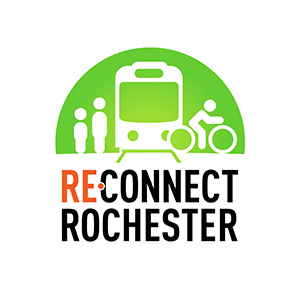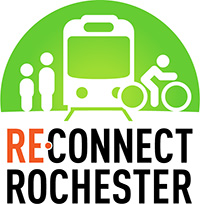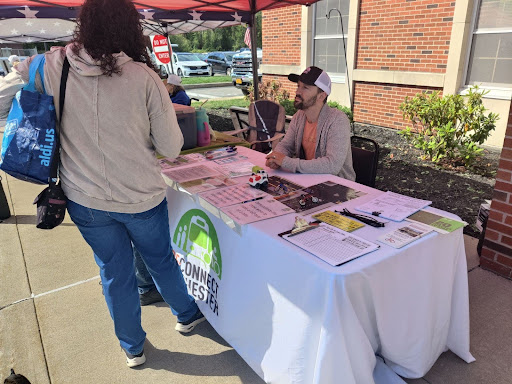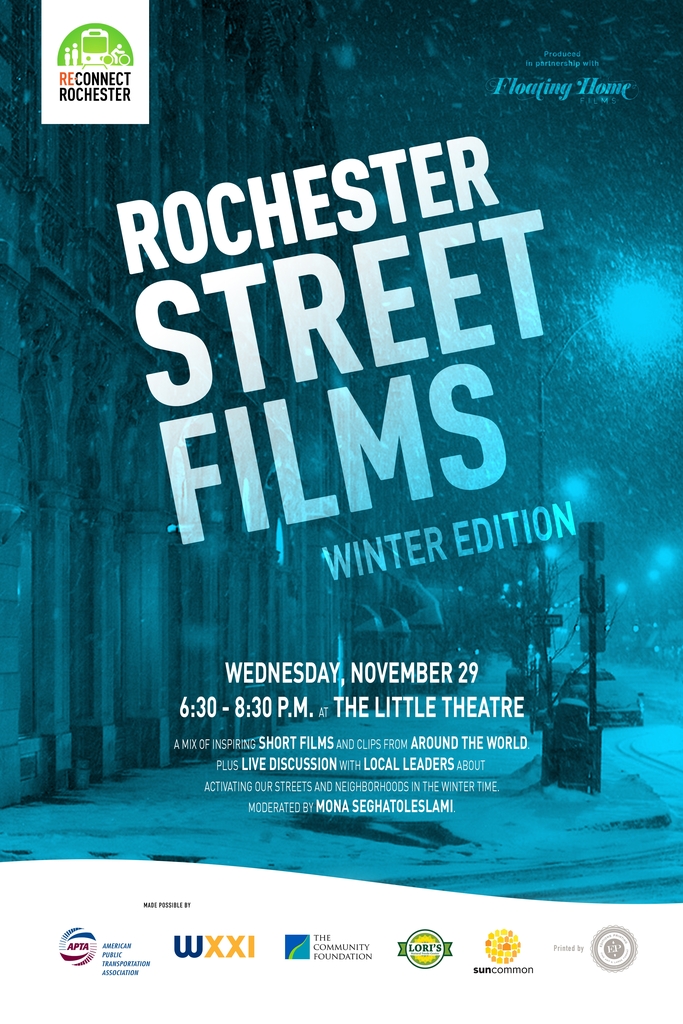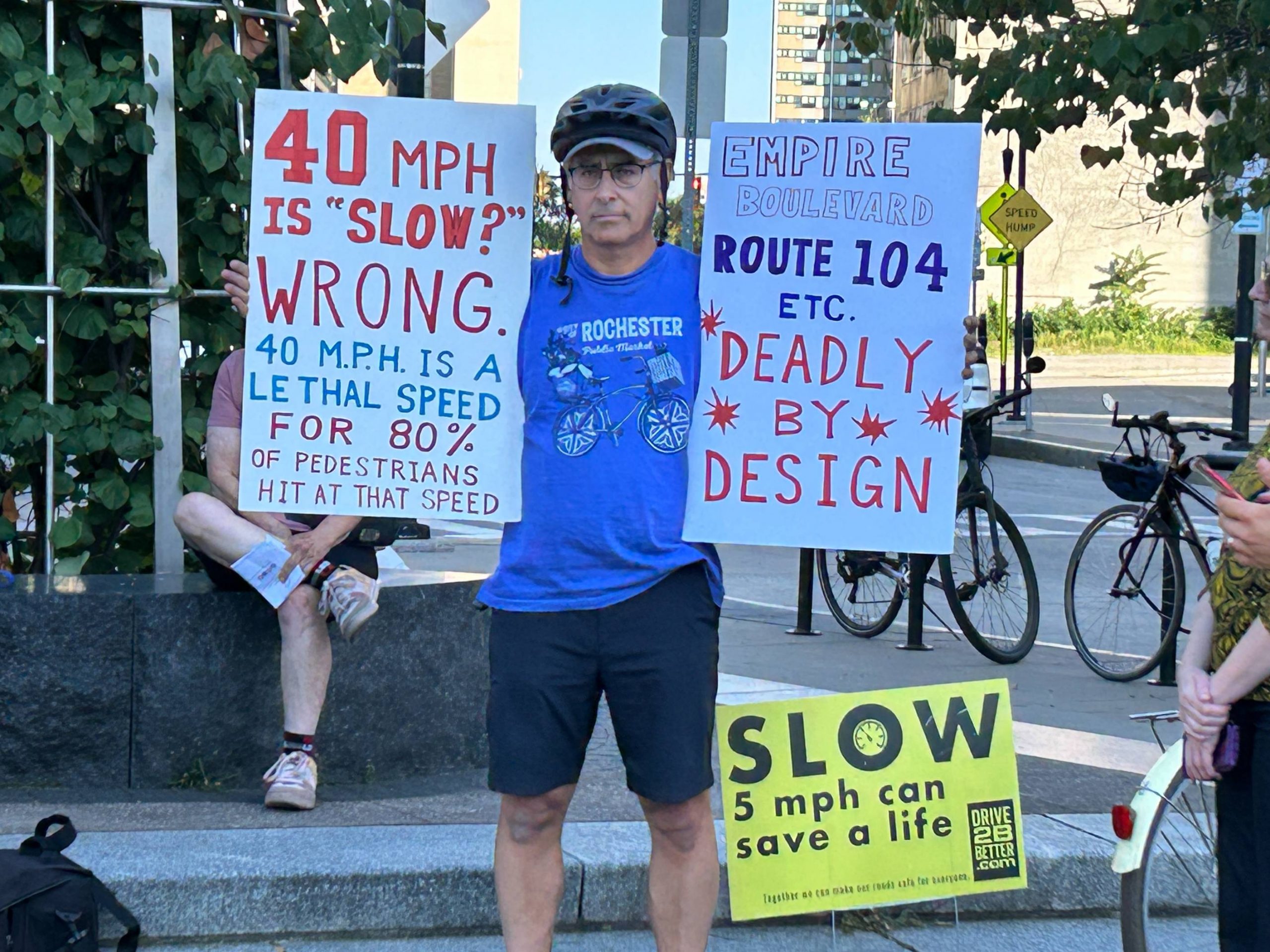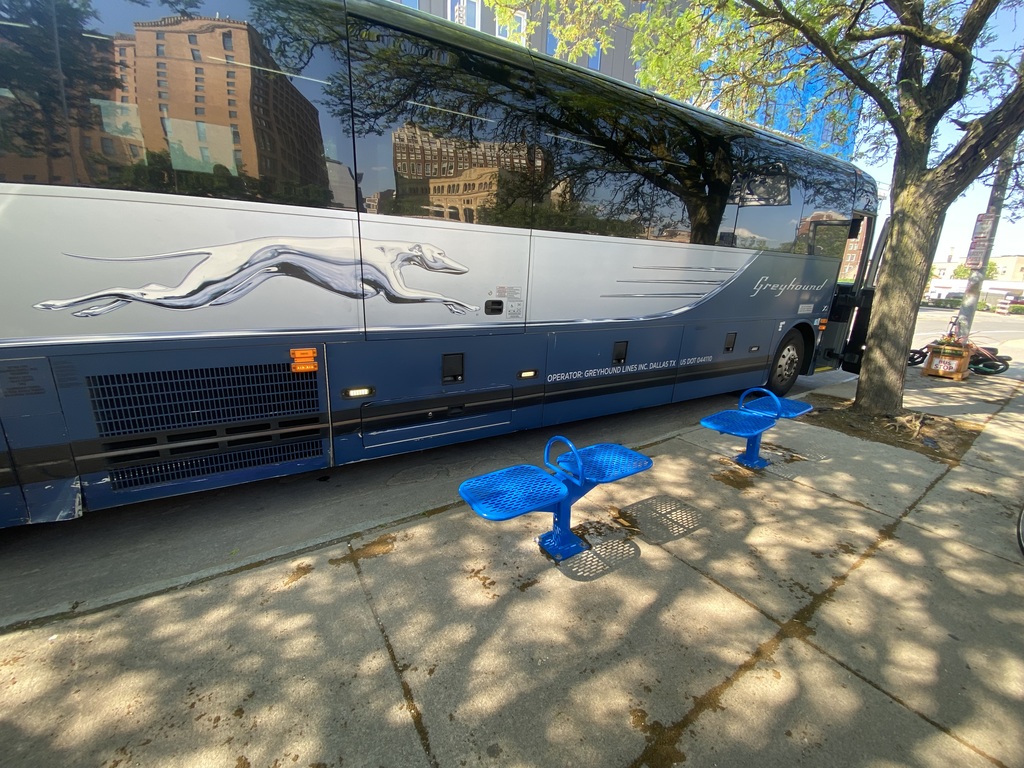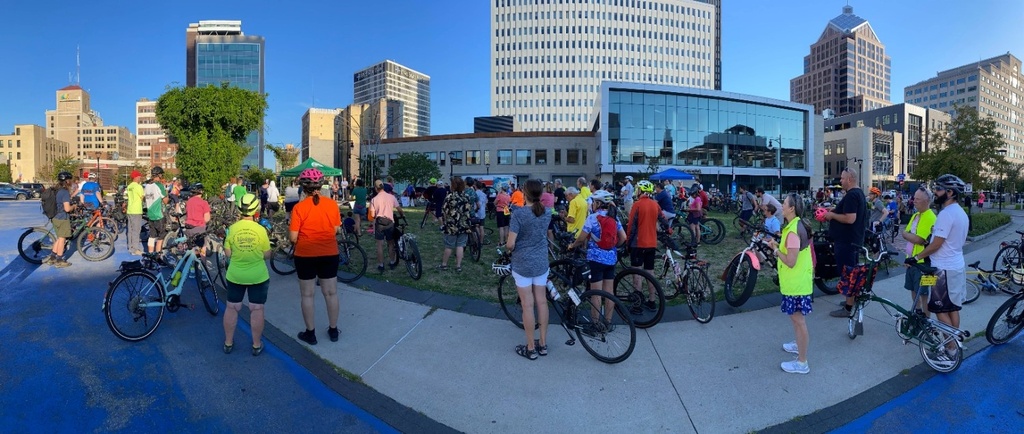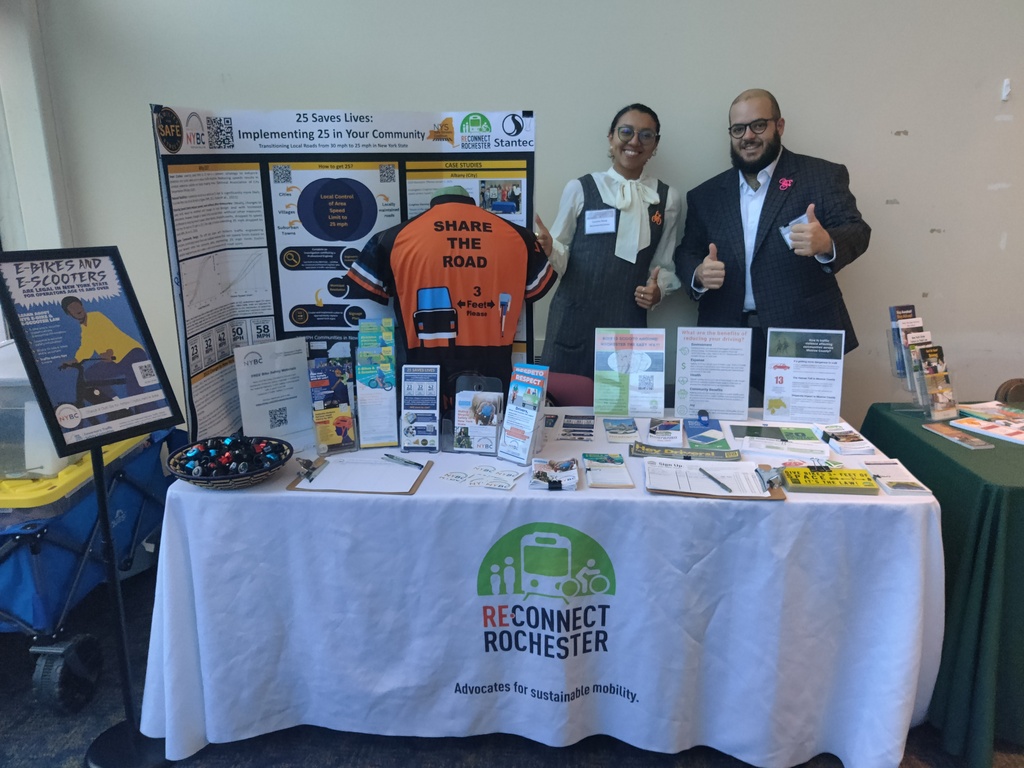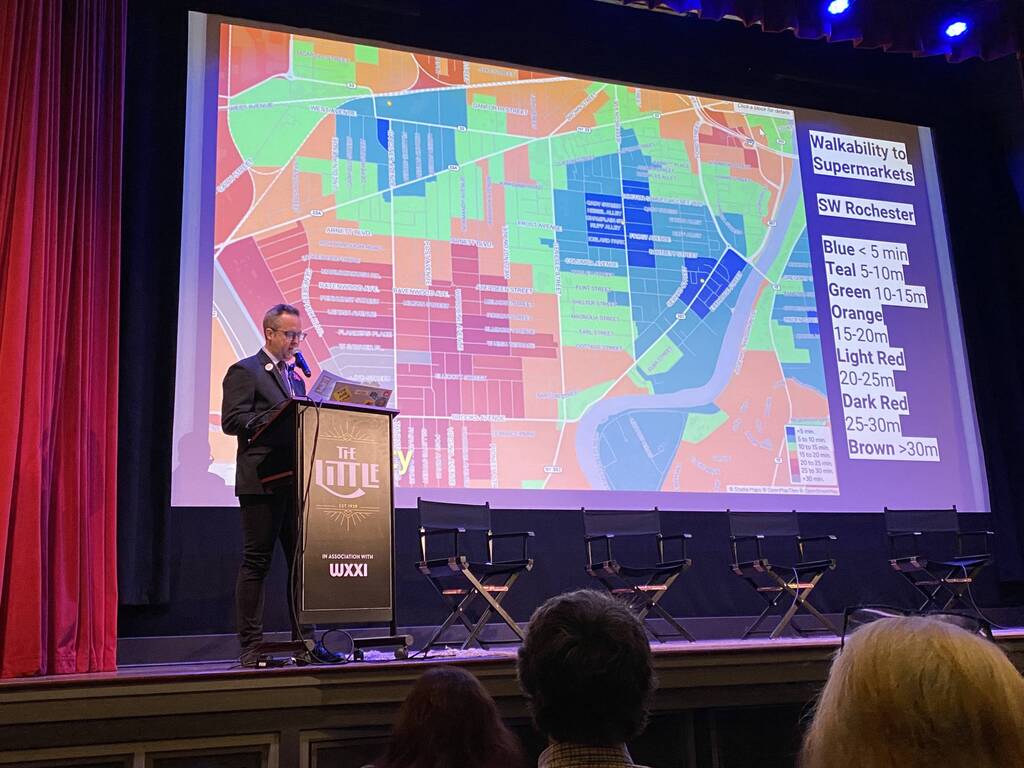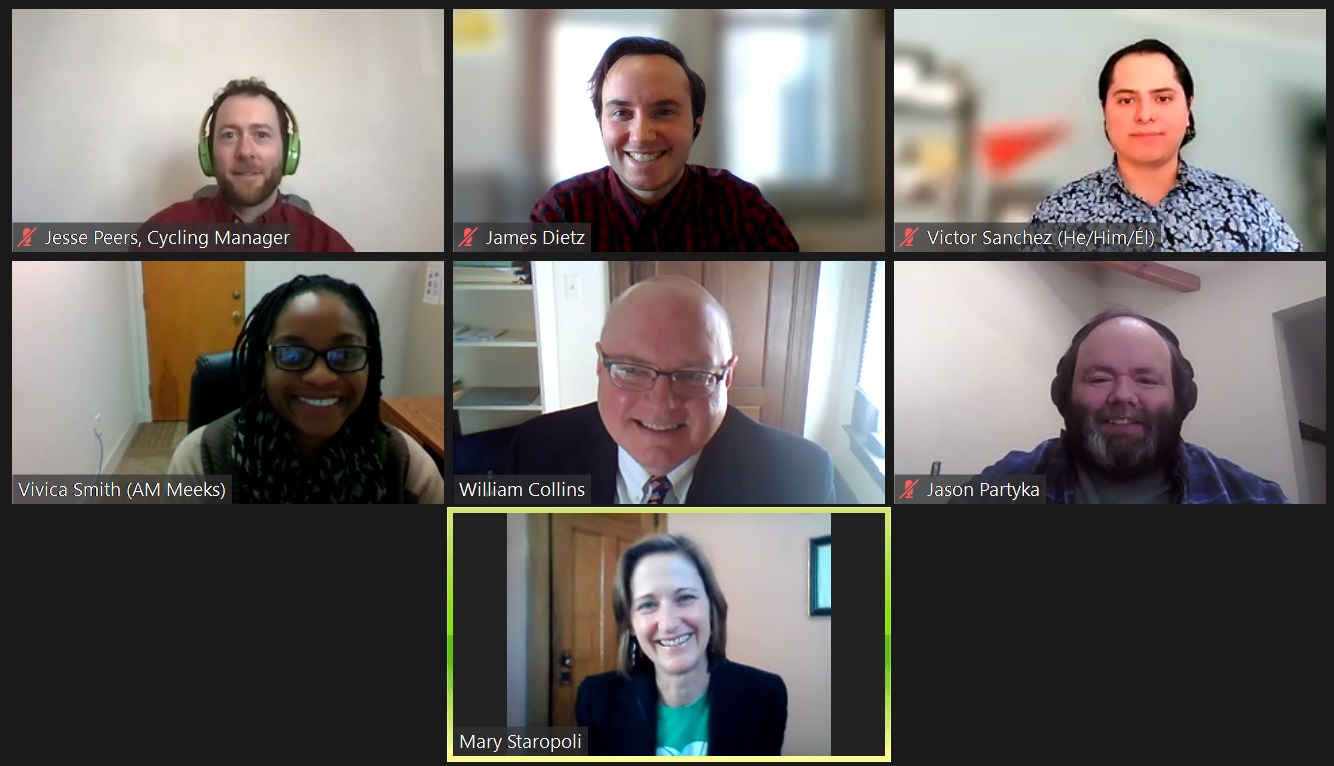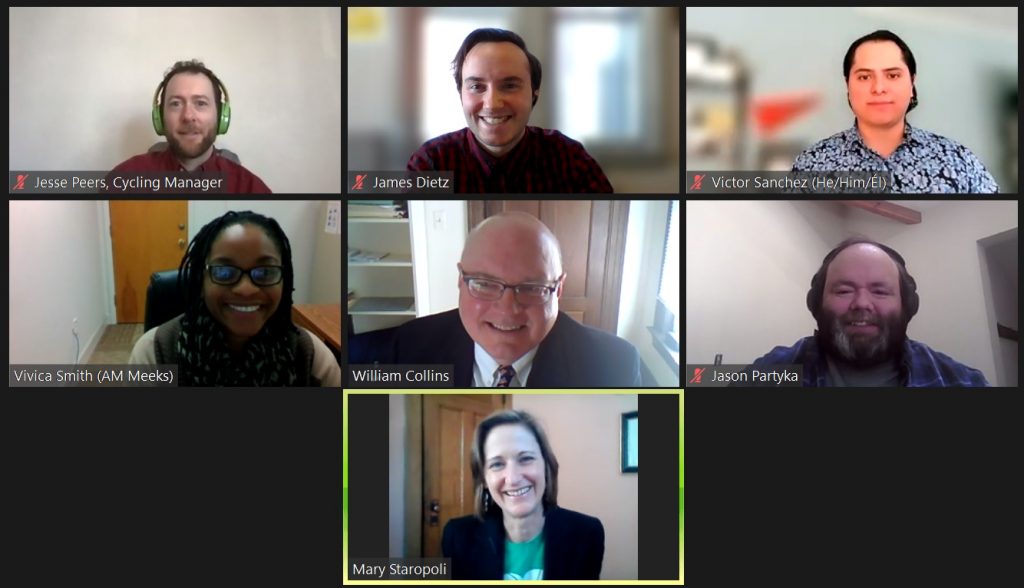At Reconnect Rochester we love getting out into the community to talk about our work. This summer we gave presentations, tabled all over Monroe County, and held hundreds of conversations about mobility with supporters, skeptics, and everything in between. Among the skeptics there were a few topics that came up so often we thought it would be helpful to list them out in a blog post along with our perspective.
People on bicycles make everyone less safe.
When a cyclist is riding recklessly they are overwhelmingly just a danger to themselves. Yet the 47 deaths and more than 5,000 injuries that happen on our streets every year in Monroe County always involve cars. It is all of our responsibility to keep each other safe, but drivers have a bigger responsibility given their capacity to do harm to people and property. This is why we advocate for and implement complete streets designs on our roadways to slow down cars.
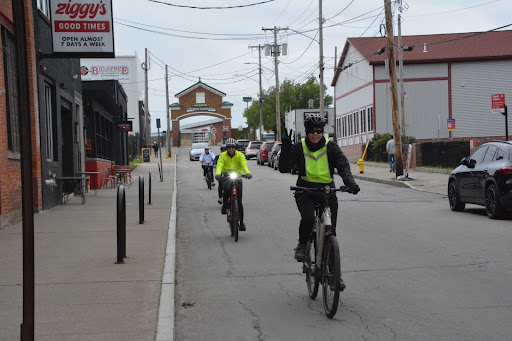
Bicycle education is a cornerstone of our work at Reconnect Rochester via our On Bike Smart Cycling Classes, Bike Education Programs, and Our Weekly Rides. Many school districts do not provide bike safety classes despite the state requirements. This leads to many kids who don’t learn the safe and legal way to ride. We aim to teach riders how to safely interact with traffic and be predictable in order to make all of us safer. A study found that nearly every road user will admit to breaking the law, though with cyclists it is often to keep themselves safe while drivers will be more likely to break the law to save time.
RTS isn’t safe.

There are millions of RTS bus trips every year in Monroe County. Less than a half percent of reported crimes take place on an RTS bus or at the Transit Center. As Misha Manjuran Oberoi wrote recently for the Democrat and Chronicle, “that’s fewer than the number of crimes reported at both schools, hospitals, bars and more.”
If risk factor is your main concern, you’re much more likely to be involved in one of the 14,000+ vehicle crashes that happen every year than you are to be in danger on the RTS buses. RTS is a great community resource and we encourage everyone to try to incorporate it into their lives when possible. The more of us who use RTS, the more it will be prioritized in transportation funding which will improve frequency and make it a more convenient option.
What about people with disabilities? How are they supposed to get around without a car?
There are many disabilities that make biking or taking the bus challenging or even impossible. At the same time, many people have disabilities that prevent them from driving but still allow them to live independently. We want to ensure that anyone who cannot drive (or anyone who just doesn’t want to) is able to move freely throughout our community. Our board member, Steve Roll, shared a powerful story about this in a blog post. After a seizure left him unable to drive for six months, biking and public transit became essential tools for maintaining his independence.
Furthermore, we have encountered many people in wheelchairs who appreciate our focus on safe streets. Our current car-centric infrastructure that relegates pedestrians to cramped sidewalks with heaved segments and poorly placed curb cuts is challenging for anyone to navigate. It is especially difficult if you are vision impaired, use a walker or rollator, or are in a wheelchair. We actually had someone put one of our Bicycle License Plates on the back of his wheelchair so he could feel safer when he is somewhere without a sidewalk (which, sadly, is true for too many of our roads). And—disabled or not—parents pushing strollers encounter the very same struggles! When we design streets for pedestrians, everyone benefits.
Why can’t you help me get a protected bike lane on my street? It’s just one street!
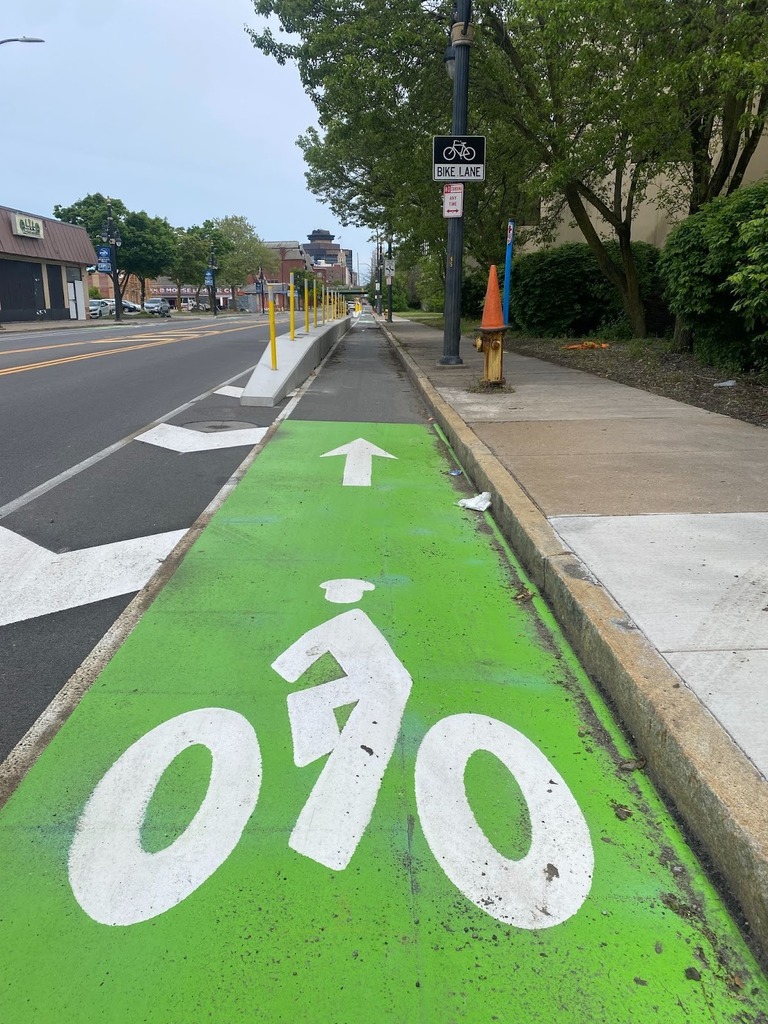
Many roads fall under different jurisdictions and require approval at the county or even state level to change. We encourage you to sign up for our Mobility Action Alerts to keep you informed on upcoming street projects and receive talking points to advocate for safe streets. We really need support at public meetings! This is where most of the changes happen.
Lastly, while protected bike lanes are great, there isn’t always space for them without drastic redesigns which aren’t always a viable option. Check out our ROC Easy Bike Map and utilize Rochester’s Bicycle Boulevard network when looking for low stress bike routes that minimize your interaction with cars.
You need to control those Veo e-scooters and you need to get them out of the middle of the sidewalk.
We support expanding transportation options for everyone, and Veo is a great choice for short trips around the city. You can grab one, ride to your destination, park it, and move on with your day unencumbered. More mobility options mean more freedom. We showcase Veo to educate people on their mobility options but we aren’t affiliated with the company and have no ability to modify their system.
Unfortunately we agree there are too many unsafe behaviors on Veo e-scooters, we have been advocating to the city and Veo to require safety education in their onboarding.
We also advise users to follow Veo’s parking rules which means out of pedestrian walkways with the kickstand engaged. We have encouraged Veo to go to a model which prevents users from parking in the middle of the sidewalk.
What’s the point of bike lanes if no one bikes in the winter?
Winter cycling is easier and more common than you may realize. Our Cycling Manager Jesse Peers wrote a great blog post about this. We encourage you to read it and watch our Winter Edition of Rochester Street Films to learn more!
No one is making you drive! Stop trying to make things harder for drivers just trying to get around.
It is worth noting that we are not anti-car. Cars are an effective tool for the right job but not every trip for every individual. Our work is focused on ensuring there are options for Monroe County residents beyond driving. Transportation options mean freedom. Freedom to choose the way you move through your day and shape the life you want to live. We deserve a transportation system with safe, connected bike routes, frequent bus service, AND roads that work for those who choose to drive.
Many people are not aware of the amount of subsidies that go into road construction and maintenance as well as gas prices; not to mention the amount of valuable public space we have ceded to storing private vehicles in the form of ample free parking. Our institutions do a lot to encourage driving and very little to encourage other modes of transportation despite the evidence that it’s cheaper to maintain road infrastructure and can improve congestion.

We are not necessarily trying to make things harder for drivers. We are pushing our leaders to consider options beyond the car when designing our communities going forward. The fact that many neighborhoods don’t have sidewalks, many roads don’t have bike lanes, and our buses only run once an hour on weekends make alternatives to driving very challenging for the 26% of city households and 12% of county households without access to a personal vehicle. When we make it easier to get around without a car, we can remove congestion, reduce collisions, and make travel easier for everyone including drivers.
You only care about bikes. What about us bus riders?
Reconnect Rochester is a multimodal advocacy organization – we have members who ride the bus every day. Transit is a big part of Reconnect’s history, including the ROC Transit Day celebration and a lot of advocacy around Reimagine RTS. We are involved in the city’s bus stop improvement project to improve amenities at hundreds of bus stops around the city. This summer we rallied RTS on-demand riders to push back on the service changes. Regrettably we were largely unsuccessful, but we will continue to advocate for better service and amenities for RTS riders at every opportunity.
A lot of transit advocacy is directed to the state and federal government so that they fund our system. On a state level our Voices of Transit program (email us at info@reconnectrochester.org if you want to participate!) tells the human stories of RTS riders to our legislators to encourage transit funding beyond car infrastructure. We are part of the New Yorkers for Transportation Equity statewide coalition, advocating for increased transit funding to improve RTS bus frequency and coverage.
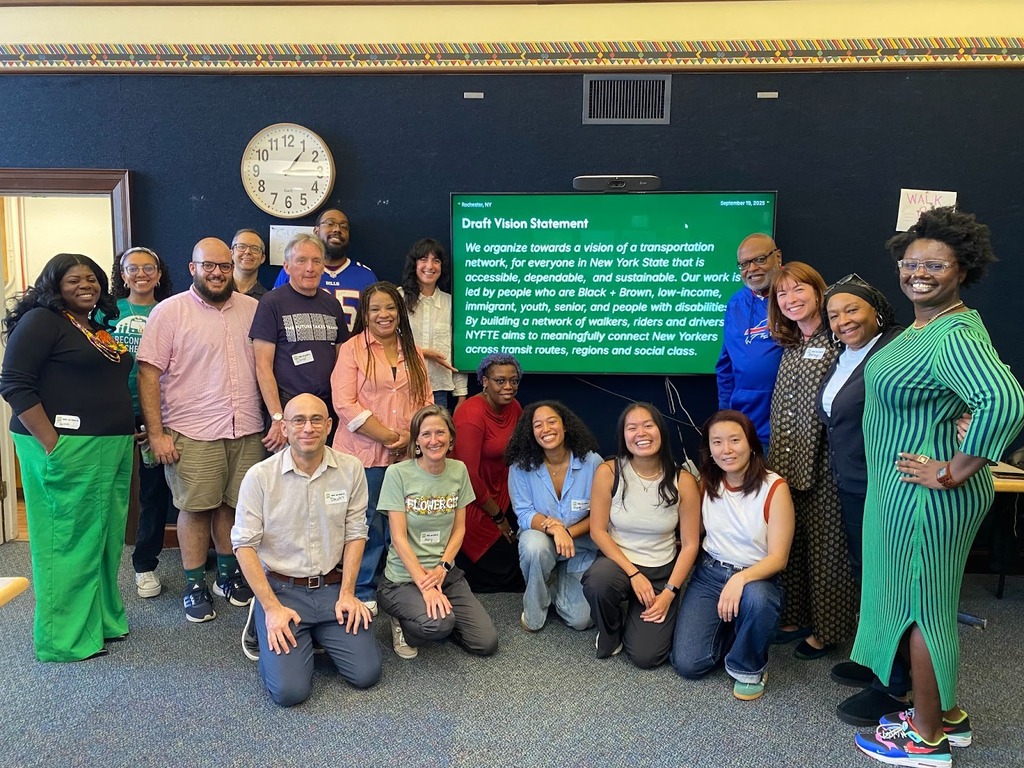
We hope these answers shed light on any questions you may have about Reconnect Rochester and our work. We welcome community voice and dialogue and it’s important to us that we continue to push for change that benefits all of us! If you like what we do, we encourage you to subscribe to our email list, follow us on Facebook, Instagram, Twitter, or Bluesky, attend one of our engagement breakfast events, and donate to support the cause!
